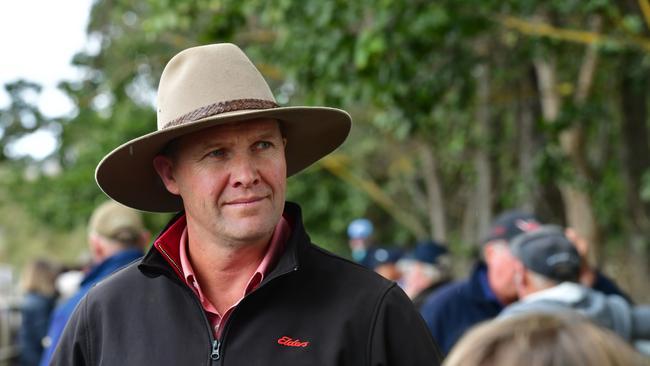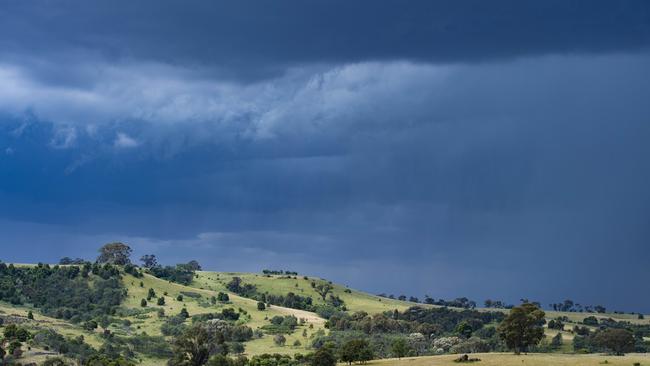Farmers reassess options amid record-breaking rainfall
Amid the “the wettest drought on record” livestock producers and grain growers are reassessing how they will tackle the new season. See the latest.
Record-breaking rainfall in the first weeks of the new year has changed the playbook for 2024, with farmers reassessing their options in light of what some have dubbed “the wettest drought on record”.
The summer soaker has put a spring in the step of livestock producers and grain growers across southeast Australia for the season ahead, despite the Bureau of Meterology’s El Nino forecast.
While ABARES has predicted the gross value of ag production will fall to $78 billion in 2023-24 – down from last year’s record of $84bn – due to what was anticipated to be hot and dry conditions for much of the country this summer, the unexpected widespread rainfall has delivered confidence in the nick of time.
Recent weaner sales, which wrap up this week and are seen as an indicator for the year ahead, saw price boosts of up to $300.
Elders Albury branch manager Matt Tinkler said the cattle market had been flat but improved just before Christmas.
“This helped to improve prices and has put everyone’s expectations a little higher,” he said.

Mr Tinkler said there was cautious optimism in the cattle market heading into 2024, and ultimately, prices would hinge on the quality of an autumn break.
But there are plenty of producers who say they could have taken advantage of cheaper cattle prices or a boost to soil moisture profiles, had the BOM outlook been different.
Injemira’s Marc Greening, at Book Book NSW, said he had sold cattle but didn’t buy in, based on what he thought was coming.
“We’ve now got green feed in January on some of our properties, which isn’t normal, but is certainly welcomed,” Mr Greening said.
Mr Greening has been in the Western District purchasing weaners for the past week.
“Now we are going with our normal buying patterns, but we could have taken advantage of the cheaper cattle back in November if we hadn’t been looking at the medium-term outlook.”
Episode3 director and market analyst Matt Dalgleish said from a livestock perspective, markets in 2024 have recovered from the lows of last year, given the disparity to global markets.
“Producers, rightly so, were preparing for a dry season, and when it didn’t come they have now re-evaluated,” Mr Dalgleish said.
“Because many producers turned off additional stock early, they won’t have to turn off more now.
“I’m not sure we are out of the woods yet for a dry 2024, there is good soil moisture, but we still have to see if the El Nino will re-form or if it will revert back to a more normal year, which I suspect will happen, which will mean a more reasonable year for livestock prices.”
Mr Dalgleish said export prospects for beef and sheep meat were good into 2024, with strong demand from the US and China for beef.
In cropping, NSW producer Dan Fox said farmers were experiencing “the wettest drought on record”.

The Marrar farmer received more than 67mm of rain this month, a situation entirely different from what was forecast, and now planned on sowing his crop earlier than anticipated.
“If you look back in history, January hasn’t been a wet month,” he said.
Mr Fox said there was plenty of soil moisture and a lot of benefits would come with that.
“These conditions also bring challenges, like weeds, but there are opportunities too,” Mr Fox said.
With plans to sow a red wheat variety called Anapurna, Mr Fox will aim to capitalise on the unexpected moisture.
“We will look for some early-season varieties, and we have found a good winter wheat suitable for earlier sowing,” he said.
And with the help of summer rain, a crop of French white millet was in the ground now, to be harvested in March.
But on the price front, Mr Fox feared it wouldn’t be so positive: “I fear they could be low. Nothing fixes high prices like high prices, and given the high yields, prices could be lower.”
Grain Producers Australia southern region director Andrew Weidemann said growers were optimistic about 2024 given the early rainfall.
“We are currently banking a lot of soil moisture, and people are also chasing weed control,” he said.
Looking at the market, he said canola was emerging as a disappointing crop in terms of price.
“I think we will see a shift away from canola this year,” he said.
Canola was currently tracking the $560 per tonne delivered to Geelong, while wheat prices have fallen too.
In contrast, Mr Weidemann said there had been some good crop yields throughout Victoria, which was likely to follow in 2024.
The long-range forecast from the bureau has predicted a drier than average February through April for northern and western parts of the country, as well as some southern regions.
But in the coming fortnight, producers should brace for above-average rainfall, with the BOM forecasting a 60 to 80 per cent chance of heavy falls for much of eastern Australia.




